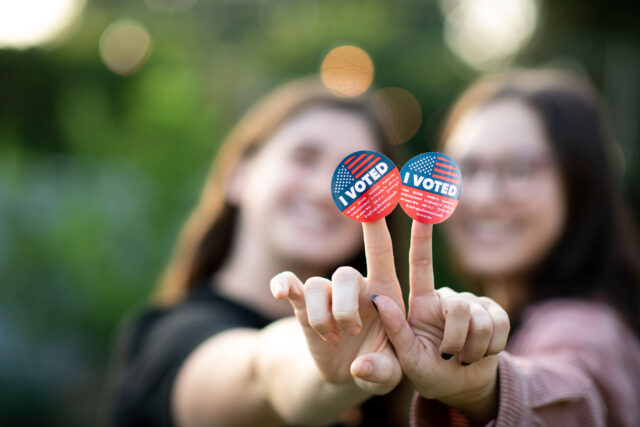Primary elections have notoriously low voter turnout, but California’s recent March election was low even for a primary. Just 35% of registrants voted, a 12-point decrease from 2020’s presidential primary and a 16-point drop from the fall 2022 election. The lack of competition at the presidential level likely played a significant role, since Joe Biden and Donald Trump had effectively eliminated all meaningful opposition by March. But low participation had consequences all the same.
Low turnout in primaries usually makes the voting population unrepresentative of California as a whole, and this year was no exception. Turnout was significantly lower among Asian Americans (18 points), African Americans (20 points), and Latinos (26 points) than it was among the rest of California’s registered voters. These three groups accounted for only 30% of those casting a primary ballot, despite making up 47% of the state’s registered voters. These disparities extend beyond primary elections: even in the intense fall election of 2022, only 34% of voters belonged to one of these three groups.

Age gaps were equally striking. A mere 16% of registered Californians under 35 voted in the March primary, in contrast to 60% of those 65 and older. As 28% of registrants, voters under 35 made up just 12% of those who actually voted. And while the gap was smaller in the fall 2022 election (29% of registered voters and 18% of those who voted), it was still significant.

Among partisans, those not registered with a major party—“no party preference” (“NPP”) and minor party registrants—had the lowest participation rate. Only 21% voted in the March primary, compared to 37% of Democrats and 46% of Republicans. The difference is partly about demography. Young people, with their lower turnout, account for a disproportionate share of those who do not register with a major party. But NPP voters also had the least to vote for, because the Republican Party did not allow them to vote in its primary. The result was predictable: despite accounting for 29% of registered voters, NPP and minor party registrants made up a mere 18% of those who cast ballots. These figures were better in the fall of 2022, when NPP voters were able to participate in all the contests (29% of registrants and 22% of voters).

Such disparities will likely narrow as we look ahead to the fall. Presidential elections are the great equalizer of voter turnout. In the fall 2020 contest, Asian Americans, African Americans, and Latinos were almost as large a share of voters (44%) as of the registered population (48%). Similarly, those under 35 and those registering NPP or with a minor party each made up 27% of voters as against 30% of registrants.
Of course, these presidential turnout numbers hide the fact that people of color and young people are less likely to be registered to vote in the first place, even when eligible. So there is still more ground to make up. But the many elections outside the presidential shape much of California’s democratic representation, and many voices are missing from those elections. This absence leads to outcomes that do not always reflect the views of Californians as a whole.
At the same time, the 2020 turnout numbers tell us that more equitable participation is possible among the registered voter population. Participation consistency plays a large role in representational distortions. The goal must be to help voters carry the same passion and motivation they feel during presidential elections into other crucial contests. By addressing this challenge, California can work toward a more representative and engaged electorate in all elections and for all policymakers and policies.
Topics
2024 Election Donald Trump elections Joe Biden Political Landscape presidential election primary election racial disparities voter turnout votersLearn More

Commentary: California’s Direct Democracy in Action—State Propositions on the November Ballot

The Political Views of Young Californians

Who Voted in the 2022 Election and What Does It Mean for 2024?

Equity in Voter Turnout after Pandemic Election Policy Changes



